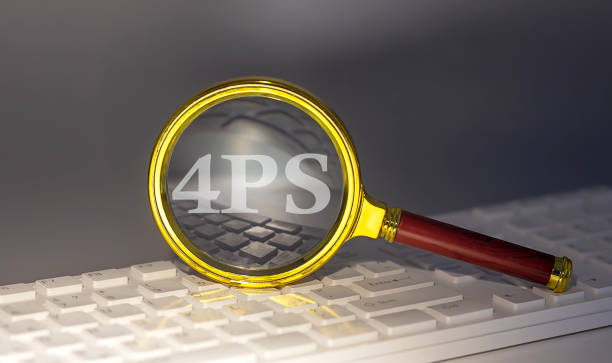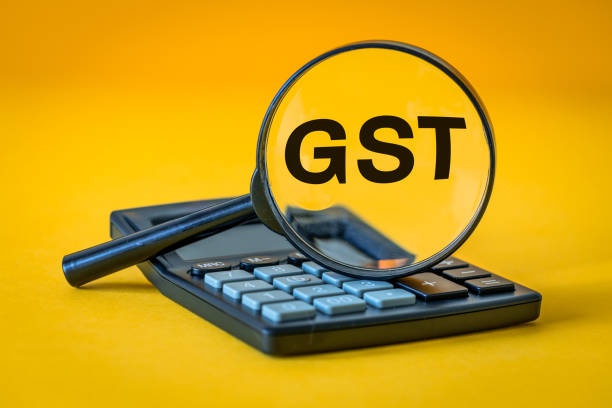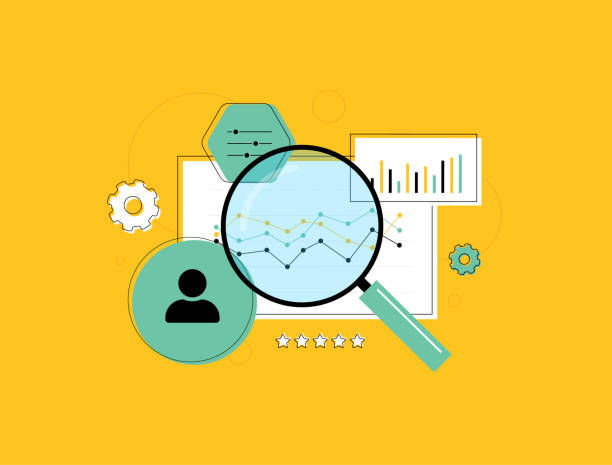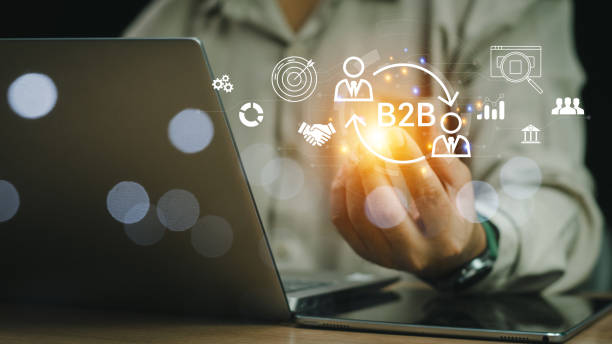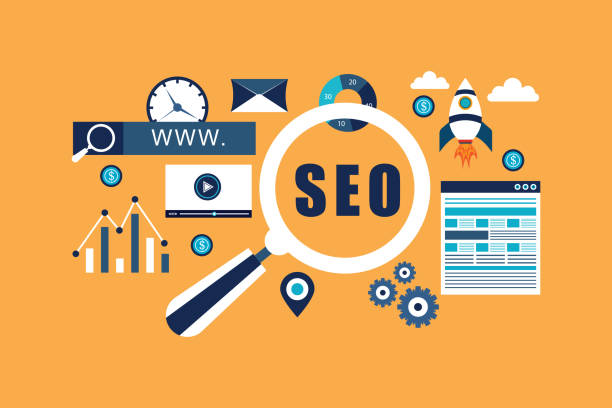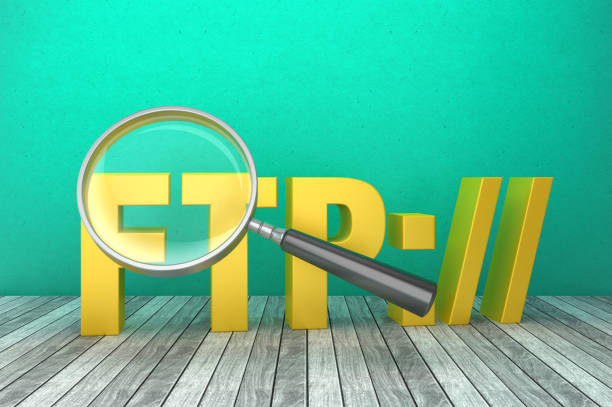### What is On-Page SEO and Why is it Important?
**On-Page SEO** (#OnPageSEO) refers to a set of actions we take within our website to improve the site’s ranking in Google search results and other search engines.
These actions include content optimization, site structure, HTML tags, site speed, and many other factors.
The importance of On-Page SEO stems from the fact that search engines pay special attention to internal site factors when ranking websites.
If your site is not optimized in terms of #OnPageSEO, its visibility in search results will decrease.
In other words, On-Page SEO helps search engines better understand your site’s content and display it to relevant users.
For example, using appropriate keywords in the title and descriptions of pages informs Google what your page is about.
Also, improving site loading speed provides a better user experience for visitors and, consequently, improves your site’s ranking.
For a better understanding of SEO concepts, you can refer to the Wikipedia page on #SearchEngineOptimization.
SEO on Wikipedia
On-Page SEO is an important part of your overall #SEO strategy and should not be overlooked.
Without a strong On-Page SEO strategy, your efforts in #OffPageSEO (link building, etc.) will not be as effective.
So start optimizing your site for On-Page SEO today and reap the benefits. In fact, On-Page SEO helps you improve your site’s ranking without spending a lot of money on advertising.
Did you know that 94% of users’ first impressions of a business are related to its website design? Turn this first impression into an opportunity for growth with professional corporate website design by **Rasaweb**.
✅ Attract more customers and increase sales
✅ Create credibility and trust in the eyes of the audience⚡ Get a free website design consultation!
Keyword Research #TheInitialPartOfSEO
Keyword research is the first and most important step in On-Page SEO.
Before you start writing content or optimizing your site’s pages, you need to know what words users are searching for on Google.
For this, you can use various keyword research tools such as Google Keyword Planner, Ahrefs, SEMrush, and Keywordtool.io.
When choosing keywords, pay attention to two important points: #SearchVolume and #Competition.
Search volume shows how many users search for a particular keyword each month.
Competition shows how many other sites are competing for that keyword.
It is best to choose words that have a good search volume and not too much competition.
Also, try to consider long-tail keywords.
These words usually have lower search volume, but higher conversion rates because they are more specific.
For example, instead of the keyword “shoes”, you can use the keyword “buy cheap men’s sports shoes”.
Finally, create a list of keywords related to your business and use them in your site’s content and HTML tags.
This way, search engines will better understand what your site is about and show it to relevant users.
With proper keyword research, you have taken a big step in On-Page SEO.
Click here to preview your posts with PRO themes ››
After reviewing the keywords, you should categorize them and place each of them on a separate page of the site. This greatly helps your site’s #OnPageSEO.
Optimizing Page Title and Meta Description
The page title and meta description are two important elements in On-Page SEO that are displayed in search results.
The page title (Title Tag) should be short, engaging, and relevant to the page’s content.
It is best if the page title includes the main keyword of the page, but avoid overusing keywords.
The meta description should also be a summary of the page’s content and encourage users to click.
The meta description should also include the main keyword of the page and answer the question that the user has in mind.
Write unique page titles and meta descriptions for each page of your site.
Avoid repeating titles and meta descriptions, as this can harm your site’s ranking.
To optimize the page title and meta description, you can use various SEO tools such as Yoast SEO or Rank Math.
These tools help you check the length of the page title and meta description and ensure they are optimized.
#OnPageSEO with optimized title and description guarantees more visitor attraction.
Below you can see an example of a title and meta description.
| Element | Description |
|---|---|
| Page Title | Maximum 60 characters, including the main keyword |
| Meta Description | Maximum 160 characters, summary of the content, encourage click |
Optimizing Page Content for #SEO
Page content is the most important factor in On-Page SEO.
Your content should be valuable, useful, and relevant to users’ needs.
When writing content, pay attention to a few important points.
First, your content should be unique and avoid copying other people’s content.
Second, your content should be readable and understandable.
Use short paragraphs, simple sentences, and pictures and videos to make the content more attractive.
Third, your content should include keywords related to the page’s topic.
Place keywords naturally in your text and avoid overusing keywords.
Fourth, your content should be updated regularly.
Old and outdated content can harm your site’s ranking.
To optimize page content, you can use various SEO tools such as Surfer SEO or Clearscope.
These tools help you find keywords related to the page’s topic and use them in your content.
Strong #OnPageSEO requires high-quality and up-to-date content.
Content should not be copied; using copied content on the site is very harmful to site SEO.
In On-Page SEO, try to avoid copied content.
Did you know that 94% of users’ first impressions of a business are related to its website design? Turn this first impression into an opportunity for growth with professional corporate website design by **Rasaweb**.
✅ Attract more customers and increase sales
✅ Create credibility and trust in the eyes of the audience⚡ Get a free website design consultation!
URL Structure and Internal Linking
The URL structure of your site’s pages should be simple, readable, and relevant to the page’s content.
Avoid using long and complex URLs.
It is best if the URLs of your site’s pages include keywords related to the page’s topic.
For example, instead of the URL “www.example.com/page123”, use the URL “www.example.com/seo-internal”.
Internal linking is also an important factor in On-Page SEO.
Internal linking means linking different pages of the site to each other.
Internal linking helps search engines better understand your site’s structure and find important pages of your site.
Also, internal linking helps users easily navigate your site and find the information they need.
When linking pages of the site to each other, pay attention to the subject relationship of the pages.
Avoid linking unrelated pages to each other.
Also, use appropriate anchor text for linking pages.
The anchor text should be relevant to the content of the page you are linking to.
#OnPageSEO requires proper URL structure and internal linking.
Internal linking has a big impact on the site’s On-Page SEO.
Optimizing Images and Videos
Images and videos can make your site’s content more attractive and interactive.
But in order for images and videos to help your site’s SEO, you need to optimize them.
When optimizing images, pay attention to a few important points.
First, reduce the size of the images to increase the loading speed of your site’s pages.
You can use various image compression tools such as TinyPNG or ImageOptim.
Second, use appropriate file names for images.
The file name of the images should be relevant to the image’s content and include keywords related to the page’s topic.
Third, use the Alt tag for images.
The Alt tag is a short description of the image’s content that is displayed if the image does not load.
The Alt tag should be relevant to the image’s content and include keywords related to the page’s topic.
Pay attention to similar points when optimizing videos.
Reduce the size of the videos, use appropriate file names for the videos, and write appropriate descriptions for the videos.
#OnPageSEO includes optimizing images and videos to increase the site’s attractiveness and ranking.
Regarding videos, be sure to upload the videos to Aparat or YouTube and use them on your site. This helps the site’s SEO.
Site Loading Speed and Mobile-Friendliness
Site loading speed is one of the important factors in On-Page SEO.
Users who enter your site expect your site’s pages to load quickly.
If your site’s pages load slowly, users will leave your site, and this can harm your site’s ranking.
To increase the site loading speed, you can use various methods such as optimizing images, using CDN, enabling Gzip compression, and using cache.
Mobile-friendliness is also one of the important factors in On-Page SEO.
Today, many users access the Internet through their mobile phones.
If your site is not optimized for display on mobile phones, mobile phone users will have a bad user experience, and this can harm your site’s ranking.
To make your site mobile-friendly, you can use responsive design.
Responsive design allows your site to automatically adapt to the user’s device screen size.
#OnPageSEO with high speed and mobile compatibility provides a better user experience and increases the site’s ranking.
| Factor | Importance |
|---|---|
| Loading Speed | Very Important |
| Mobile-Friendly | Very Important |
Using Schema Markup for #SEO
Schema Markup is code that you can add to your site to help search engines better understand your site’s content.
Schema Markup provides more information about your site’s content to search engines and helps them display richer search results (Rich Snippets).
Rich Snippets can include information such as ratings, prices, photos, and more descriptions.
Using Schema Markup can help increase your site’s click-through rate (CTR) in search results.
To use Schema Markup, you can use various tools such as the Google Structured Data Markup Helper.
These tools help you create the appropriate Schema Markup code for different pages of your site.
Advanced #OnPageSEO using Schema Markup helps search engines better understand the content and improves the site’s ranking.
To use schema, you should get help from a specialist or try to use it yourself by studying a lot in this field.
Did you know that a weak corporate website takes away many opportunities from you every day? Solve this problem forever with professional corporate website design by Rasaweb!
✅ Create a powerful and trustworthy image of your brand
✅ Targeted attraction of new customers and increased sales
⚡ [Get a free website design consultation]
Improving User Experience (UX)
User Experience (UX) refers to the feeling that users have when visiting your site.
If users have a good user experience, they will stay on your site longer, view more pages, and are more likely to become customers.
To improve your site’s user experience, pay attention to a few important points.
First, your site should have a beautiful and attractive design.
Second, your site should have easy and understandable navigation.
Third, your site should have valuable and useful content.
Fourth, your site should have a high loading speed.
Fifth, your site should be mobile-friendly.
By improving your site’s user experience, you can improve your site’s ranking in search results and increase the number of your visitors and customers.
On-Page SEO not only focuses on optimizing for search engines but also on optimizing for users.
On-Page SEO and optimizing user experience are necessary and complementary to each other.
Monitoring and Measuring #SEO Results
After you have taken On-Page SEO measures, you should monitor and measure its results.
To do this, you can use various tools such as Google Analytics and Google Search Console.
Google Analytics helps you check your site’s traffic and view information such as the number of visitors, bounce rate, time spent on the site, and the most visited pages.
Google Search Console helps you check your site’s performance in search results and view information such as the number of clicks, number of impressions, keyword ranking, and site errors.
By monitoring and measuring SEO results, you can identify the strengths and weaknesses of your SEO strategy and take the necessary measures to improve it.
#OnPageSEO is a continuous process and requires constant monitoring and optimization.
Using analytical tools, you can evaluate your On-Page SEO performance and optimize your strategy.
To be able to properly monitor your On-Page SEO, you must have an SEO specialist by your side.
Frequently Asked Questions
| Question | Answer |
|---|---|
| What is a Meta Title and why is it important in On-Page SEO? | The Meta Title is the most important element of On-Page SEO that is displayed at the top of the browser tab and in search results. This title helps search engines and users understand the main topic of the page and should include the main keyword. |
| What role does the Meta Description play in On-Page SEO? | The Meta Description is a short summary of the page’s content that is displayed below the title in search results. Although it does not directly affect ranking, its attractiveness can increase the click-through rate (CTR). |
| How should keywords be used in page content? | Keywords should be used naturally and relevantly in strategic places such as the title, headings, first paragraph, and body text. Avoid excessive keyword stuffing. |
| What is the importance of high-quality and comprehensive content in On-Page SEO? | High-quality, unique, informative, and comprehensive content that meets the user’s needs is of high importance. Search engines give higher rankings to content that creates real value. |
| What is the application of Heading tags (H1-H6) in the On-Page SEO structure? | Heading tags (H1, H2, H3, etc.) are used to structure content and specify the importance of different sections. H1 is the main title of the page and each page should have only one H1. Other tags are used for subheadings. |
| How to optimize images to improve On-Page SEO? | To optimize images, use descriptive Alt Text that includes relevant keywords, reduce image file size without losing quality, and use meaningful and relevant file names. |
| What are the characteristics of a SEO-friendly URL? | A SEO-friendly URL should be short, readable, descriptive, include the main keywords, and be without extra characters. The URL structure should be hierarchical and logical so that it is understandable for both users and search engines. |
| How does Internal Linking help On-Page SEO? | Internal linking by connecting related pages to each other helps users and search engine crawlers better understand the site’s structure, transfer the credibility of pages, and increase the time users spend on the site. |
| What is the impact of page loading speed on On-Page SEO? | High loading speed is critical for both user experience and SEO ranking. Slower pages may be ignored by search engines and lead to an increased bounce rate. |
| Why is mobile-friendliness so important in On-Page SEO? | Given the increasing number of searches through mobile devices, having a responsive and mobile-friendly site is essential for user experience and ranking in search results (Google’s mobile-first indexing). |
And other services of Rasa Web advertising agency in the field of advertising
Intelligent custom software: an effective tool to increase sales by customizing the user experience.
Intelligent website development: an effective tool to analyze customer behavior by intelligently analyzing data.
Intelligent customer journey map: a novel service to increase click-through rates by optimizing key pages.
Intelligent marketplace: an exclusive service to grow website visits based on intelligent data analysis.
Intelligent custom software: designed for businesses looking to analyze customer behavior by optimizing key pages.
And more than a hundred other services in the field of internet advertising, advertising consulting and organizational solutions
Internet Advertising | Advertising Strategy | Advertorial
Resources
Inbound Marketing
,What is On-Page SEO?
,On-Page Optimization
,The Guide To On-Page SEO
? Rasa Web Digital Marketing Agency is your strategic partner on the path to online growth and brilliance. We lead your business to the peaks of success by providing innovative solutions from secure website design to professional SEO optimization.
📍 Tehran, Mirdamad Street, next to the Central Bank, Southern Kazerun Alley, Ramin Alley No. 6



